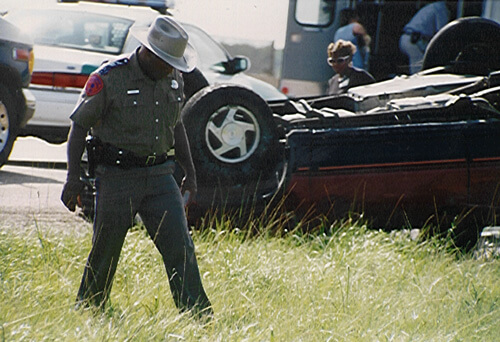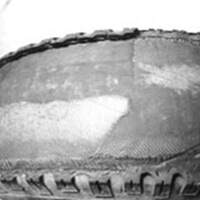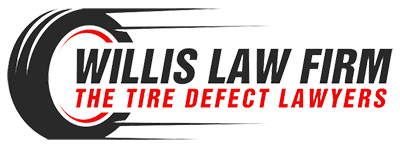Severe wrecks, rollovers, roof crushes, and blowouts can occur as a direct consequence of defective Firestone tires. Some of the most common problems include tread separations, tread loss, sidewall failure, ply/belt losses, detreading, and sudden deflation. At highway speeds, any of these problems can be devastating.
For over 30 years, Willis Law Firm has represented individuals and families suffering from serious injuries because a damaged Firestone tire caused an accident. We’ve even fronted a recall of millions of defective Firestone tires. We’re the ones to call if you have a case. Call us toll-free at 1-800-883-9858 or email us for a consultation. What causes Firestone tires to fail? Read up on the issues here.

One of our cases involving a Firestone tread separation and a SUV rollover.
Willis Law Firm
About Firestone Tire and Rubber Company
Harvey Firestone founded the Firestone Tire and Rubber Company in 1900, focusing on developing and manufacturing pneumatic tires at its Akron, Ohio-based facility. It was one of the first to start mass-producing tires, and Ford Motor Company honored it as Ford’s very first supplier in 1906. Firestone also popularized the concept of tire replacements. Today, Firestone is a subsidiary of the Bridgestone Corporation following a 1988 buyout, with over 52 production facilities located around the globe and a headquarters in Nashville. It also runs the world’s largest chain of servicing centers. Click here for more information on Bridgestone.
Firestone 500 Tread Separation Problem

Tire tread separation from a Ford Expolorer Rollover
Willis Law Firm
Issues with the Firestone 500 radial tire began in the 1970s. The steel belts started separating from the treads when vehicles hit high speeds, more than likely the consequence of ineffective bonding cements. Because of this poor adhesion, water may have leaked into the tire and started damaging the steel wires within. Following the March 1978 investigation by the National Highway Transportation and Safety Administration (NHTSA), the defect was declared a design flaw on the part of Firestone.
A 1973 internal memo issued by then-director of development Thomas A. Robinson spoke of the defect, leading Firestone to attempt to fix the issue on its own without NHTSA interference.
Because Firestone could not fully bring the 500s back to a suitably safe design, it had to recall over 400,000 tires originating from the Decatur plant. Firestone didn’t help its own cause by foisting the blame onto consumers and refusing to fully cooperate with the NHTSA.
By 1978, Firestone was forced to take back another 7 million 500 tires, which remains to this day the largest tire recall in history. The 34 deaths linked to the company’s oversight led directly to a Congressional testimony and $500,000 worth of fines. In addition, Firestone settled numerous serious injury and wrongful death lawsuits out of court.
Rollover Controversy in Ford Explorers
In 1996, several state agencies in Arizona began having major problems with Firestone tires on Explorers. According to news reports, various agencies demanded new tires, and Firestone conducted an investigation of the complaints. Firestone tested the tires and asserted that the tires had been abused or under-inflated.
When the state of Arizona reported issues with the Firestone tires on Ford Explorers, it asked the manufacturer to supply them with new equipment. Once again, the tire company responded with accusations that the consumer was to blame. Firestone’s reticence to comply launched an investigation.
In addition, Ford was named as another responsible party in the issue. Despite requesting the inclusion of a nylon ply in tires from Firestone’s Venezuelan plant and changing the suspension to accommodate the new model, this motion was not to be made in the United States. This eventually led to major lawsuits stemming from failure in the Firestone ATX, Wilderness AT and ATX II models, and the 2001 separation between Ford and Bridgestone/Firestone. Deaths and injuries continued into 2006 and beyond, with concerns regarding aged replacement tires still occasionally lingering. An estimated 97 percent of the recalled tires were replaced.
Willis Law Firm and Defective Firestone Tires
Willis Law Firm proudly stood at the forefront of the 2000 Firestone and Ford Explorer tire recall, offering its experience and insight to help save lives across America. For our efforts, we earned a Steven J. Sharp Award. We’ve got 30 years of experience and Martindale-Hubble recognition behind our services, which include investigations, evidence procurement, and every other step of the personal injury lawsuit process. For help with your defective Firestone tire case, please schedule a consultation with us via email or by calling us toll-free at 1-800-883-9858.
